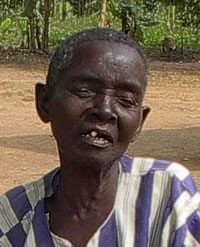Banyole in Uganda

Photo Source:
Doug Wicks
|
Send Joshua Project a map of this people group.
|
| People Name: | Banyole |
| Country: | Uganda |
| 10/40 Window: | No |
| Population: | 756,000 |
| World Population: | 756,000 |
| Primary Language: | Nyole |
| Primary Religion: | Christianity |
| Christian Adherents: | 75.00 % |
| Evangelicals: | 15.00 % |
| Scripture: | New Testament |
| Ministry Resources: | Yes |
| Jesus Film: | Yes |
| Audio Recordings: | Yes |
| People Cluster: | Bantu, Central-Lakes |
| Affinity Bloc: | Sub-Saharan Peoples |
| Progress Level: |
|
Introduction / History
The Banyole are among the minor Bantu tribes in Uganda. They speak Lunyole. They are also called 'Abalya Lwooba' which means mushrooms eaters because they love eating mushrooms.
Where Are they Located?
The Banyole are found in the eastern district of Butaleja, their neighbors being the Jopadhola, Bagisu, Bagwere and Basoga in south, east, north and west respectively.
What Are Their Lives Like?
Their lives are surrounded by carrying out subsistence agriculture, originally they would grow finger millet but these days they have turned to rice growing which serves as a nontraditional cash crop. The Banyole are mostly polygamous people.
What Are Their Beliefs?
The Banyole are largely Christian, with Islam being the other major religion. There is also a small percentage of traditionalists. Understanding of Scripture is limited due to a low literacy rate and a weak understanding of the languages in which Scripture is published (Luganda and English). This shallow understanding of Scripture allows the people who have been converted to Christianity to become vulnerable to backsliding - falling back on traditional religious practices, among other reasons, with some of them even being drawn to Islam. The need for missionaries is for assistance in translating and in further understanding of Scripture, as well as deepening the local pastors' and leaders' understanding of Scripture through training and discipleship.
There is some belief in witchcraft, though it has declined substantially. They many clans and every clan has a leader called omutuusa who on many occasions he puts on skins for recognition.